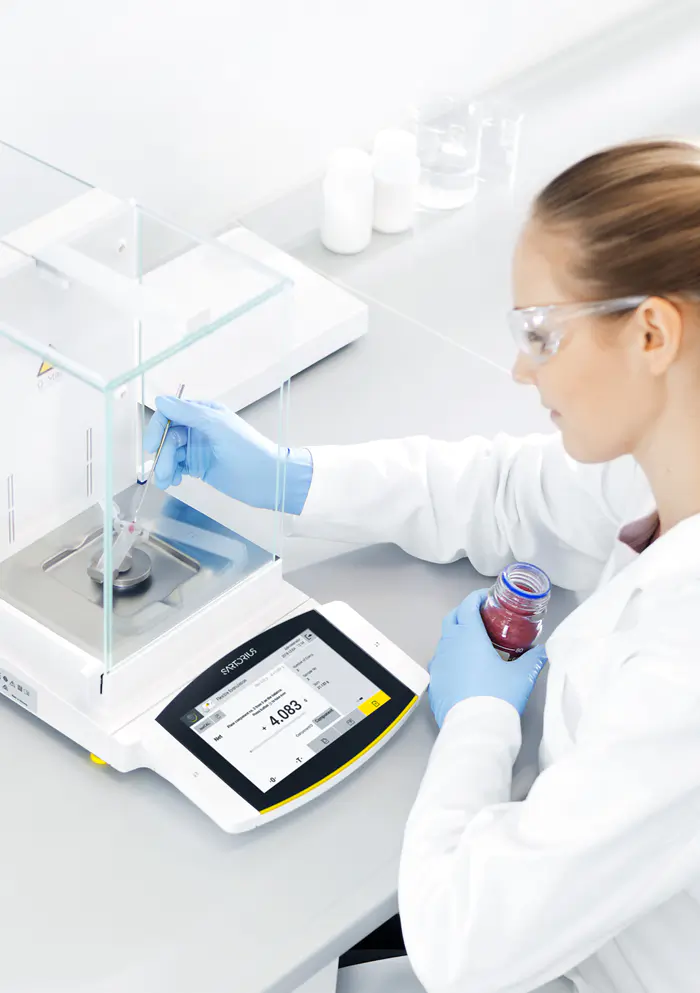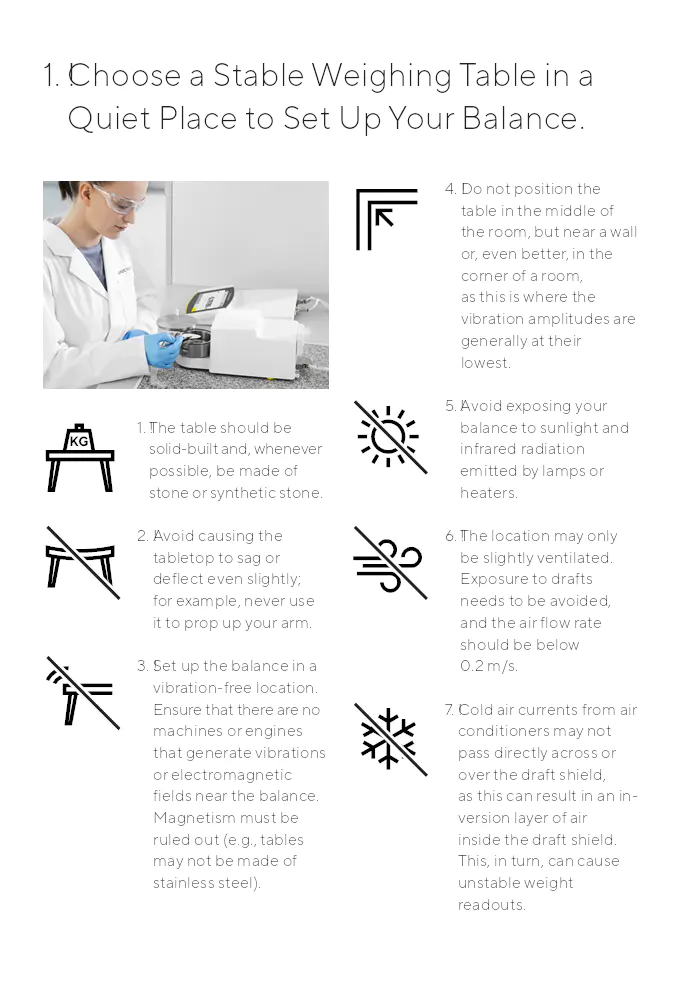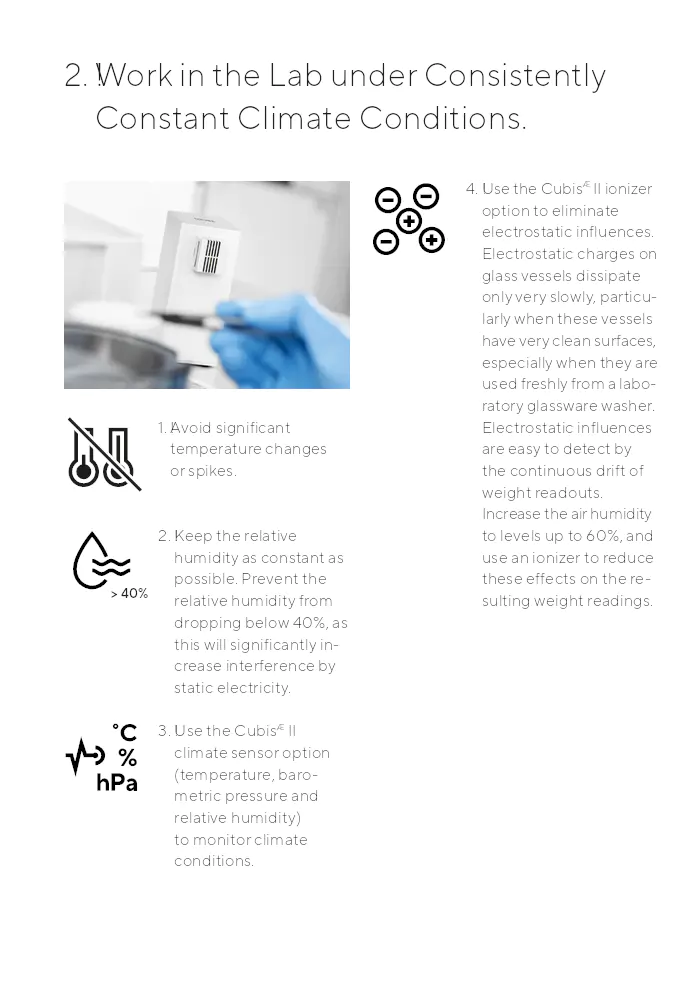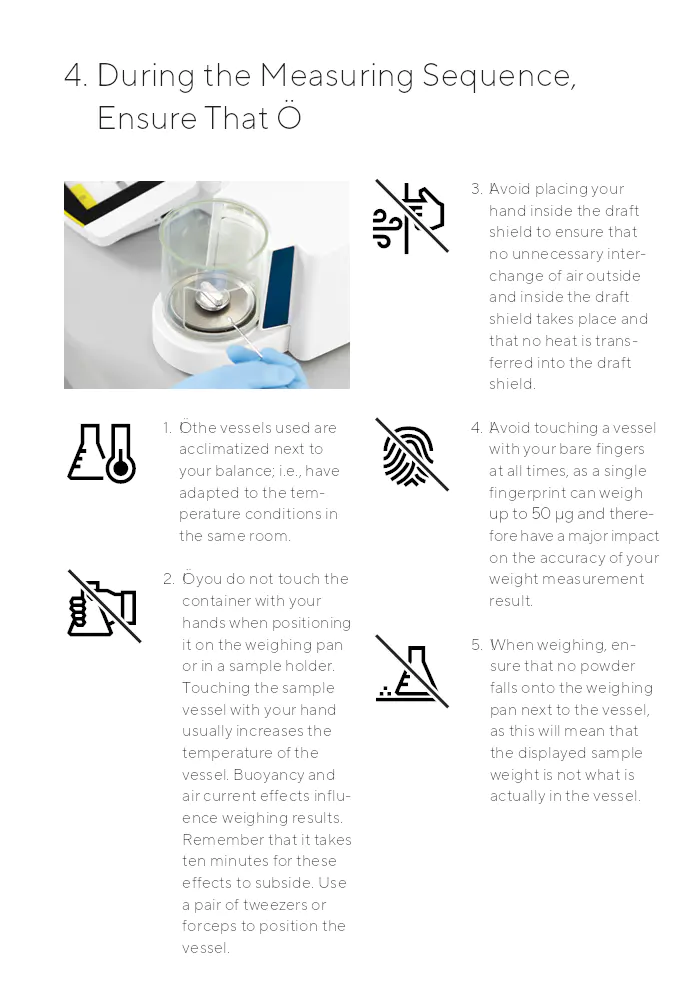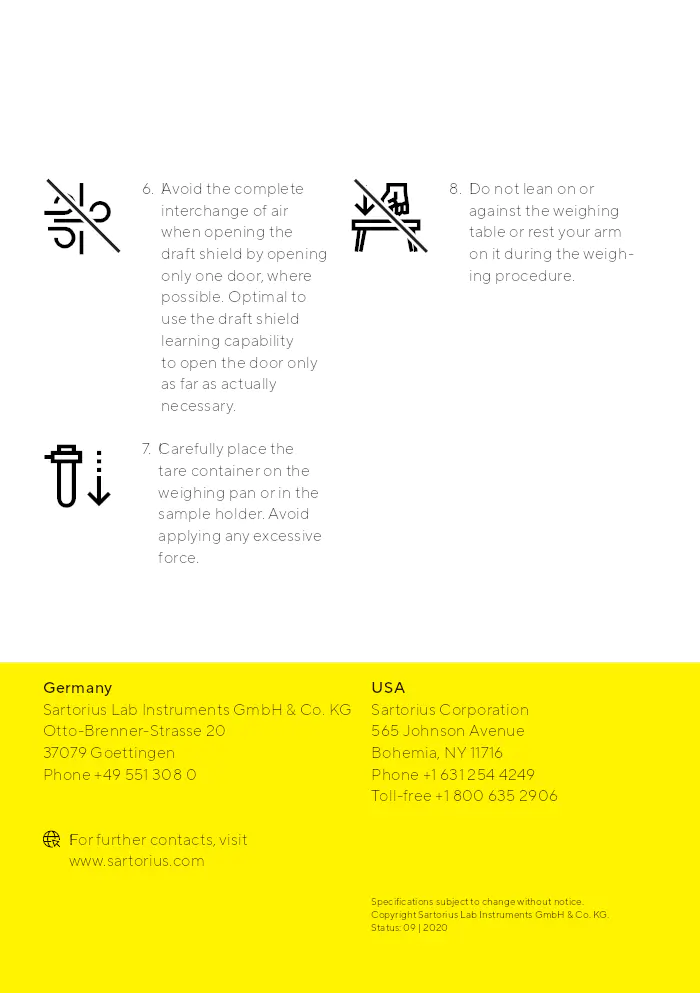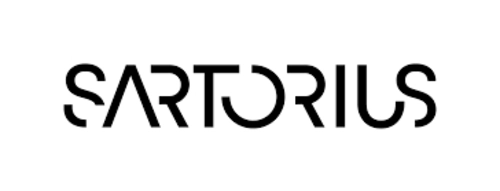guide d'optimisation des performances de pesage avec balances haute résolution cubis ii
guide pour optimiser les performances de pesage avec les balances cubis ii de sartorius
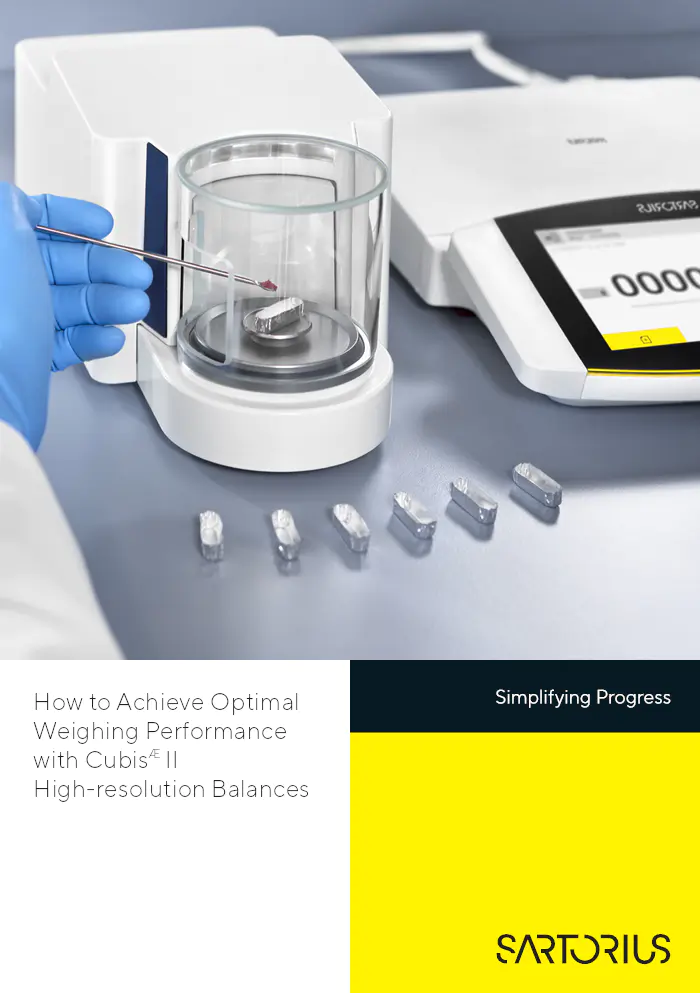
Contenu du document
Introduction
Les scientifiques en R&D ou en laboratoires analytiques ont besoin de résultats de pesage fiables. La plateforme Cubis® II de Sartorius offre un portefeuille entièrement configurable, performant, comprenant à la fois des équipements et des logiciels de pesage de laboratoire pour répondre aux attentes des clients au plus haut niveau.
La modularité de Cubis® II permet de choisir parmi une gamme de 45 modules de pesage différents qui répondent à vos préférences. Ce portefeuille inclut également des balances à très haute résolution, telles que les balances ultra-micro, micro, semi-micro et analytiques. Ces balances hautement sensibles demandent une inspection plus approfondie de leur site et une compréhension plus approfondie des influences externes causées par l'utilisateur ou l'environnement pour toujours atteindre les meilleures performances.
En suivant les instructions et recommandations ci-dessous, votre balance fournira toujours les meilleures performances de pesage et des résultats hautement fiables.
1. Choisir une table de pesée stable dans un endroit calme
- La table doit être solidement construite et, si possible, en pierre ou en pierre synthétique.
- Évitez de faire fléchir ou affaisser le plateau de table. Par exemple, n'utilisez jamais la table pour reposer votre bras.
- Installez la balance dans un endroit sans vibrations. Assurez-vous qu'il n'y a pas de machines ou de moteurs générant des vibrations ou des champs électromagnétiques près de la balance. Le magnétisme doit être exclu (par exemple, les tables ne doivent pas être en acier inoxydable).
- Ne placez pas la table au milieu de la pièce, mais près d'un mur ou, encore mieux, dans le coin d'une pièce, car c'est là que les amplitudes de vibration sont généralement les plus faibles.
- Évitez d'exposer votre balance à la lumière du soleil et aux radiations infrarouges émises par des lampes ou des radiateurs.
- Le lieu doit être légèrement ventilé. Les courants d'air doivent être évités et le débit d'air doit être en dessous de 0,2 m/s.
- Les courants d'air froid des climatiseurs ne doivent pas passer directement à travers ou au-dessus du pare-brise, car cela peut entraîner une inversion de l'air à l'intérieur du pare-brise, ce qui peut causer des lectures de poids instables.
2. Travailler dans le laboratoire sous des conditions climatiques constantes
- Évitez les changements de température significatifs ou les pics.
- Maintenez l'humidité relative aussi constante que possible. Empêchez l'humidité relative de descendre en dessous de 40 %, car cela augmentera considérablement l'interférence par l'électricité statique.
- Utilisez l'option de capteur climatique Cubis® II (température, pression barométrique et humidité relative) pour surveiller les conditions climatiques.
- Utilisez l'option ioniseur Cubis® II pour éliminer les influences électrostatiques. Les charges électrostatiques sur les récipients en verre se dissipent très lentement, en particulier lorsque ces récipients ont des surfaces très propres, surtout lorsqu'ils sont utilisés fraîchement sortis d'un lave-vaisselle de laboratoire. Les influences électrostatiques sont faciles à détecter par la dérive continue des lectures de poids. Augmentez l'humidité de l'air à des niveaux allant jusqu'à 60 % et utilisez un ioniseur pour réduire ces effets sur les lectures de poids résultantes.
3. Assurez-vous que la balance est nivelée et calibrée
- Toutes les balances Cubis® II vous aideront à utiliser la fonction d'ajustement/calibrage isoCAL, et la fonction Q-Level intégrée à la balance pour le nivellement maintient continuellement l'exactitude des résultats de pesage dans une plage de tolérance étroite.
- De plus, vérifiez régulièrement la balance à l'aide d'un poids certifié externe.
- Le Centre de Statut Cubis® II affiche toutes les informations sur votre balance et les conditions environnementales, par exemple, calibrage, nivellement, température, humidité, pression d'air et entretien, centralisés dans un tableau de bord. En cas d'avertissements ou d'erreurs, vous obtenez une aide et un support détaillés.
4. Pendant la séquence de mesure, assurez-vous que ...
- … les récipients utilisés sont acclimatés à côté de votre balance; c'est-à-dire, adaptés aux conditions de température dans la même pièce.
- … vous ne touchez pas le conteneur avec vos mains lors de son positionnement sur le plateau de pesée dans un porte-échantillon. Toucher le récipient avec votre main augmente généralement la température du récipient. Les effets de flottabilité et de courant d'air influencent les résultats de pesage. Rappelez-vous qu'il faut dix minutes pour que ces effets s'estompent. Utilisez une paire de pinces ou de forceps pour positionner le récipient.
- Évitez de placer votre main à l'intérieur de la protection contre le vent pour éviter tout échange d'air inutile entre l'extérieur et l'intérieur de la protection, et éviter que la chaleur ne soit transférée à l'intérieur de la protection.
- Évitez de toucher un récipient avec vos doigts nus à tout moment, car une seule empreinte digitale peut peser jusqu'à 50 ?g et avoir donc un impact majeur sur la précision de votre mesure de poids.
- Lors du pesage, assurez-vous qu'aucune poudre ne tombe sur le plateau de pesée à côté du récipient, car cela signifierait que le poids affiché de l'échantillon n'est pas celui contenu dans le récipient.
- Évitez l'échange complet d'air en ouvrant la protection contre le vent en ouvrant une porte autant que nécessaire. Optimal pour utiliser la capacité d'apprentissage de la protection contre le vent pour ouvrir la porte uniquement autant que nécessaire.
- Placez soigneusement le récipient de tare sur le plateau de pesée ou dans le porte-échantillon. Évitez d'appliquer une force excessive.
- Ne vous appuyez pas ou ne vous adossez pas à la table de pesée ni ne reposez votre bras dessus pendant la procédure de pesée.
Pour des contacts supplémentaires, visitez www.sartorius.com
Spécifications sujettes à modification sans préavis. Copyright Sartorius Lab Instruments GmbH & Co. KG. Statut : 09 | 2020
Entreprises concernées :
Document protégé
Document uniquement accessible aux visiteurs connectés
Pas encore de compte ?
Inscrivez-vous
Déjà un compte ? Cliquez ici pour vous connecter
Connectez-vous
